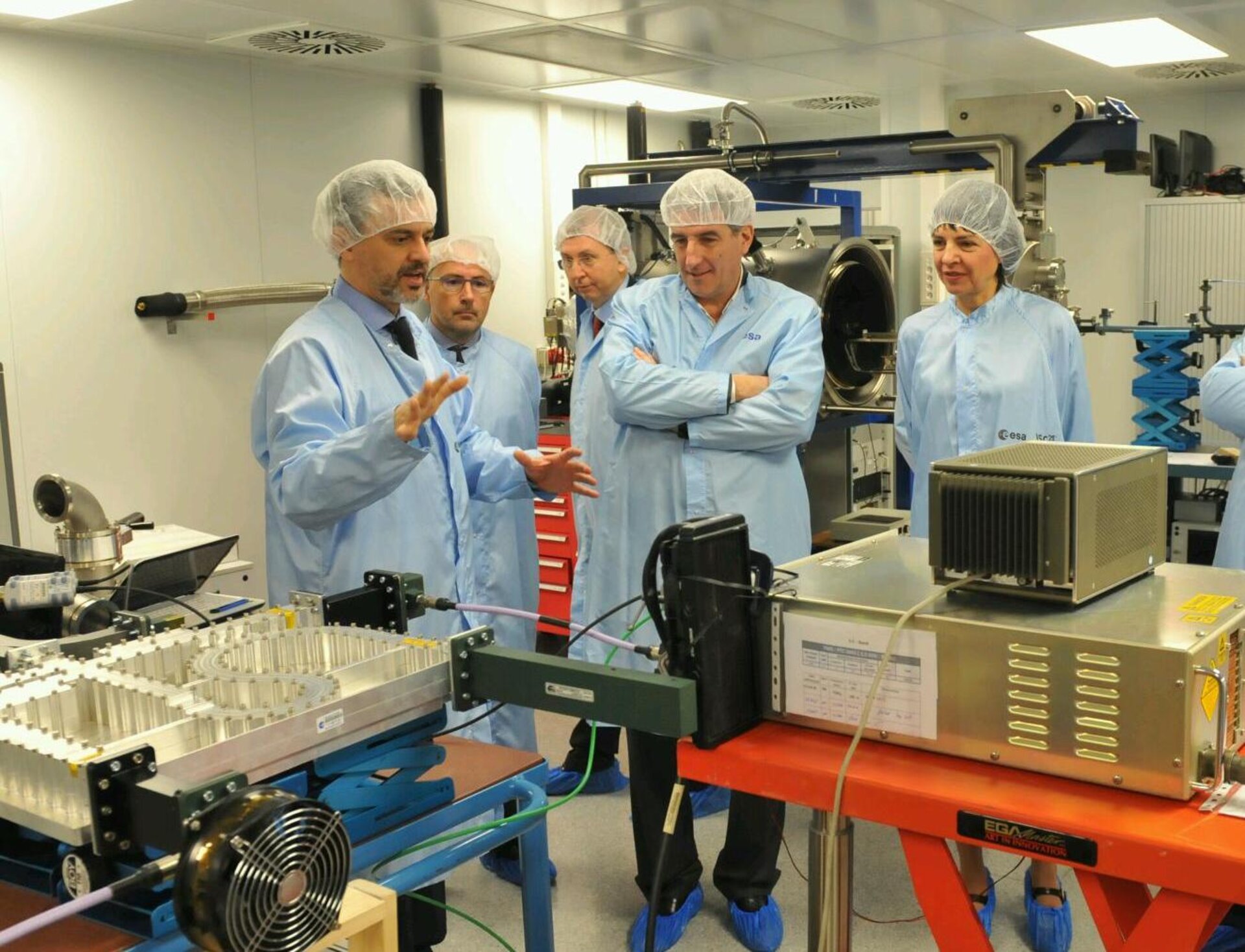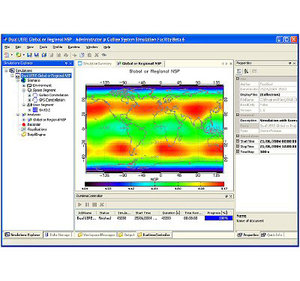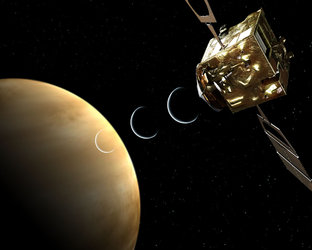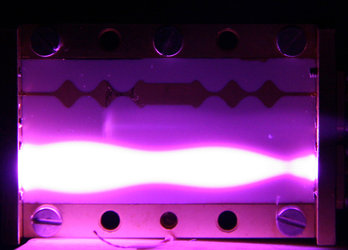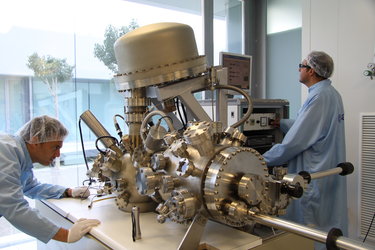ESA technical Director visits Spanish ESA high-power radio lab
Franco Ongaro, ESA’s Director of Technical and Quality Management, paid a visit today to an essential Agency laboratory in Valencia, Spain, tasked with helping to keep high-power radio systems operating in space for years on end.
The High Power Radio Frequency (RF) Laboratory is one of a network of ESA labs located all across Europe, each one covering different aspects of the space environment, making their expertise available to Agency missions as well as the wider space industry.
Franco Ongaro runs the Directorate that owns and operates the lab jointly with the Valencia Space Consortium (VSC) – a non-profit organisation set up by Valencia’s two universities, its regional government and municipality.
“Each year satellites are required to have more power when it comes to communicating with Earth,” explains David Raboso, managing the lab for ESA. “Modern RF systems operate up to multi-kilowatt power levels, but this can have potentially destructive side-effects in the vacuum of space.”
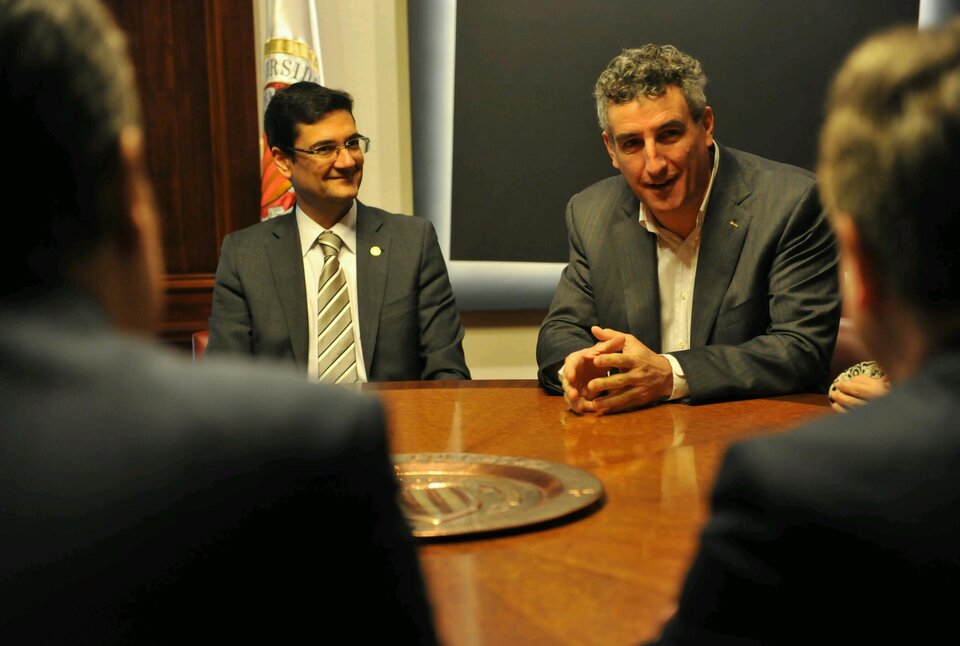
The resulting strong radio frequency energy can generate damaging secondary, resonating emissions, through what is known as the 'multipactor' effect.
Similarly, small amounts of surrounding gases can be ionised into glowing ‘corona’, possibly causing localised heating or lightning-like electrical discharges. Powerful emissions may also cause ‘passive intermodulation’ interference with weaker antennas.
The lab’s role is to better understand and help avoid these risky phenomena for forthcoming missions, as well as troubleshoot any problems that arise with missions already in space.
The High Power RF Lab was founded back in the 1980s, tackling problems that arose as ESA developed its pioneering ERS Earth-observing radar missions. It was originally based at ESA’s ESTEC technical centre in the Netherlands, but was moved to Valencia in 2010, in an effort to increase its use by industry and researchers.
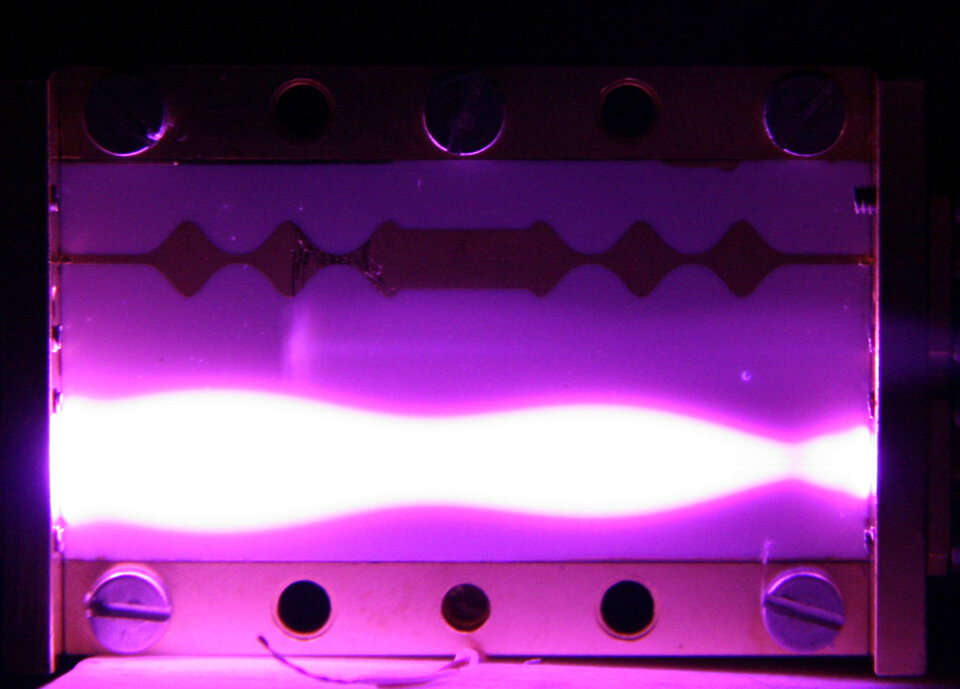
“We have exceeded initial expectations for the facility’s use,” remarks Lab Co-Director Vicente Boria, a professor at the Polytechnic University of Valencia and President of the VSC Executive Committee.
Since being established in Valencia, the laboratory has seen a six-fold increase in the number of test campaigns performed. In 2015 alone, the Lab gave support to 18 major aerospace companies and supported ESA missions including Galileo, Biomass, SmallGeo, Meteosat and ExoMars.
In June 2012 ESA and the VSC decided to open a second laboratory at the Engineering School of the Burjassot–Partnera Campus of the University of Valencia, devoted to the study of the effects of high-power RF systems on materials. The High-Power Space Materials Laboratory includes a pristine cleanroom for the examination of flight hardware and a suite of diagnostic tools.
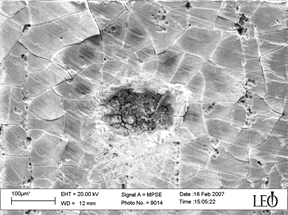
“These materials are very important for space,” adds Co-Director of the new Lab, Benito Gimeno, also a Polytechnic University of Valencia professor and Vice-President of the VSC Executive Committee.
“The systems which depend on these materials must stay operational under adverse conditions from 10 to 15 years – and cannot be repaired.”
Both labs are open to all types of aerospace companies as well as governments and research organisations. They operate on a non-profit basis, with revenues used to cover operating costs.
“Any profits generated are reinvested,” says VSC manager David Argilés. “By updating and improving our facilities, we aim to continue to support cutting-edge research and development.”


